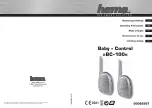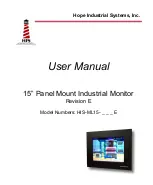
Overview of Fail-safe Systems
1.2 Safety Integrated - the Integrated Safety Concept by Siemens
Safety Engineering in SIMATIC S7
1-2
System Manual, 04/2006, A5E00109529-05
1.2
1.2
Safety Integrated - the Integrated Safety Concept by Siemens
Safety Integrated
Safety Integrated is the integrated safety concept for automation and drives by Siemens.
Proven technologies and systems from automation engineering are used for safety
engineering. Safety Integrated covers the entire chain of safety from sensors and actuators
down to the controller, including safety-related communication over standard field buses.
In addition to their functional tasks, drives and controllers also take on safety tasks. A
particular feature of Safety Integrated is that is ensures not only reliable safety, but also a
high level of flexibility and productivity.
Safety-Related Input and Output Signals
Safety-related input and output signals form the interface to the process. This enables, for
example, direct connection of single-channel and two-channel I/O signals from devices such
as emergency STOP buttons or light barriers. Safety-related signals are redundantly
combined internally. Safety-related input signals are read redundantly (e.g., 2 times) and
compared. The unified read result is passed on to the central processing unit in a fail-safe
manner for further processing. Safety-related actuators are driven based on redundant
ANDing without any additional action on the part of the user. Interconnection of the inputs
and outputs is also greatly simplified.
This eliminates the need for some of the individually mounted hardware switching devices,
resulting in a simplified control cabinet design.
Fail-safe Distributed I/O Systems
Implementation of fail-safe distributed I/O systems enables conventional safety engineering
designs to be replaced by PROFIBUS DP components. This includes replacement of
switching devices for emergency STOP, protective door monitors, two-hand operation, etc.
Advantages of Integrating Safety Engineering into Standard Automation Systems
Integration of safety engineering into standard automation systems has the following
important advantages:
•
An automation system with integrated fail-safe engineering is more flexible than
electromechanical solutions.
•
Integration entails less complicated wiring solutions.
•
Integration requires less engineering effort, as standard engineering tools are used for
configuring and programming.
•
Only one CPU is required, as safety-related sections of the program can be executed
alongside standard sections in the CPU.
•
Simple communication between safety-related and standard program components.















































